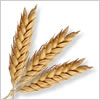Uw winkelwagen
 UK: Barley quality mixed due to dry weather this year
UK: Barley quality mixed due to dry weather this year
2025 has been a mixed year for the UK’s barley quality because of the dry weather. Some sizeable challenges with screenings in barley, especially in Scotland, plus higher nitrogen levels are likely to cause difficulties in meeting some malting specifications, AHDB said in its report published on November 4.
For spring barley samples across GB, just 90.0% was retained by a 2.5 mm sieve, down from last year’s 94.9% and likely the lowest level since 2012.
In Scotland, with spring barley as the main crop, screenings are a serious challenge. On average (across all samples) just 88.0% is retained by a 2.5 mmm sieve, down sharply from 95.3% last year. While acknowledging the unavailability of data for 2022 and differences in validation methodology, this is still likely to be the lowest retention level in Scotland since 2003.
Winter barley has generally fared better with higher retention rates (screenings) and improved specific weights overall in 2025 than 2024. At 66.8 kg/hl, the average specific weight for winter barley samples is well above last year’s 63.8 kg/hl. However, the highest average nitrogen content since 2011, at 1.78%, could still cause difficulties in meeting some malting specifications.
The quality challenges, combined with the smallest barley crop since 2012, will likely reduce the available crop for malting. However, human and industrial demand is expected to fall another 4% this season as the rising cost-of-living continues to impact alcohol consumption. The challenges to domestic and global demand for malting barley is weighing on prices, and adds further pressure to growers.
Back





